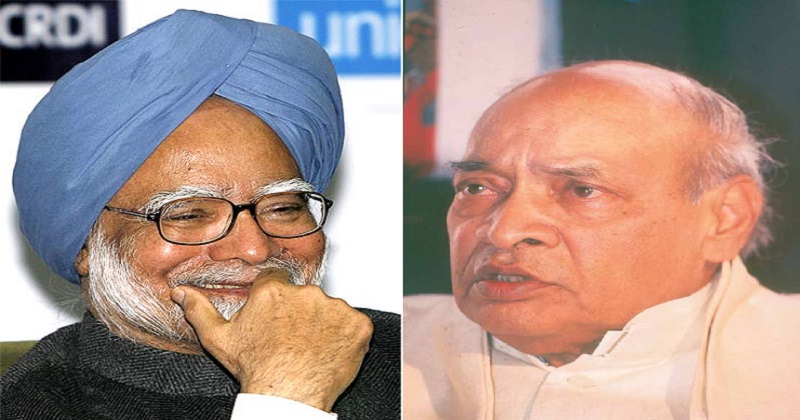
In 1991, Dr Manmohan Singh became the then Finance Minister under P V Narasimha Rao Government, when the Indian economy was undergoing a severe crisis. India was undergoing macroeconomic balance and several other problems such as poor productivity, rising inflation rates, etc.
The country’s foreign debt had climbed to about $72 billion, the third highest in the world at that time, and its imports far outweighed exports. That meant that the country’s reserves of foreign currency weren’t even enough to support any more imports, especially petroleum. The situation was so grim that the Indian government had to mortgage some 20 tonnes of gold for $240 million, just to keep the economy afloat.
That same year, after being out of power for two years, the Congress party was elected back. Though a minority government—the Congress was still 40 seats short of majority—P V Narasimha Rao became prime minister.
Within weeks of coming to power, Rao and his finance minister, Manmohan Singh, announced a series of policy decisions that kickstarted the liberalisation and privatisation of the Indian economy. These reforms freed up India from many bureaucratic hurdles and red tape, providing the foundation for strong economic growth.
Since then, India’s economy has turned into Asia’s third-largest, and is today the world’s fastest-growing large one.
Amidst all this, Rao’s legacy seems to have been buried, even as the credit for the reforms was widely given to Singh (who later also became prime minister) and some of the economists in the government.
In his book, 1991—How P V Narasimha Rao made History, Sanjaya Baru, a former newspaper editor and media advisor to prime minister Singh, analyses Rao’s role during that landmark year. Earlier this week, Baru spoke to Quartz about his book. Here are edited excerpts from the interview:
P V Narasimha Rao’s leadership in 1991
It is the political leadership, first with Chandra Shekhar (prime minister before Rao) and then with Rao, who were able to create a political environment in which the economic crisis was dealt with.
The economists in government, be it Manmohan Singh, Montek Singh Ahluwalia, Rakesh Mohan or many others, were only facilitating policy making.
But the political leadership in a democracy is provided by the prime minister. The tragedy of the last 25 years is that the Congress party buried Rao’s legacy.
Professional economists have written of it as though the reforms were all thought of by economists and conducted by economists. But why is it that Rajiv Gandhi, who was prime minister for five years with 400 members of parliaments, failed to undertake these reforms? Because he did not have the political skills.
But did Rao not want to take credit for what he did?
He allowed Dr Manmohan Singh to get all the credit for the economic policy.
But in the realm of foreign policy, he was quite happy to take credit. The Look East policy, the recognition of Israel, beginning the talks with China, he deserves credit for all that. He did not shy away from taking credit on the foreign policy front.
But the problem is not that he did not want to take credit. The problem is that, once he was out of office, the Congress party simply buried him and his legacy.
How do you rate his foreign policy initiatives?
I would rate him next to Jawaharlal Nehru in that area. Nehru gave Indian foreign policy a direction after independence. He was the architect of foreign policy. In 1991… Rao redefined India’s foreign policy.
One by reaching out to our neighbours. He was the first prime minister to reach out to Nawaz (Sharif). He also reached out to the leadership in Bangladesh and Sri Lanka. In fact, he is the original architect of Narendra Modi’s neighbourhood policy.
Second, he reached out to east Asian nations, particularly Japan, South Korea, and Singapore and defined what is now called as the Look East policy. Third, he recognised Israel and redefined India’s relations with West Asia, particularly with Saudi Arabia and Iran.
Fourth, he began border talks with China, and laid the framework for the negotiations over the next 30 years. Fifth, he managed the transition of the Soviet Union, especially with the rise of Russia. Finally, he began a new phase with India’s engagement with the US.

Post Your Comments